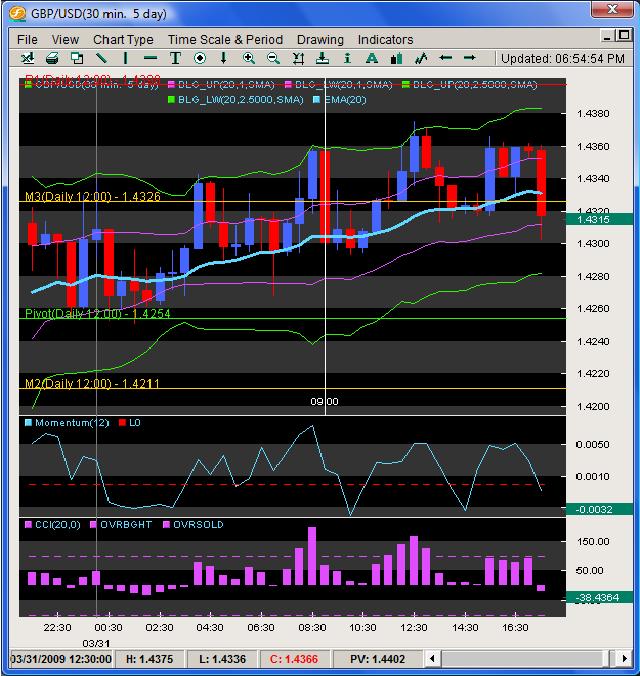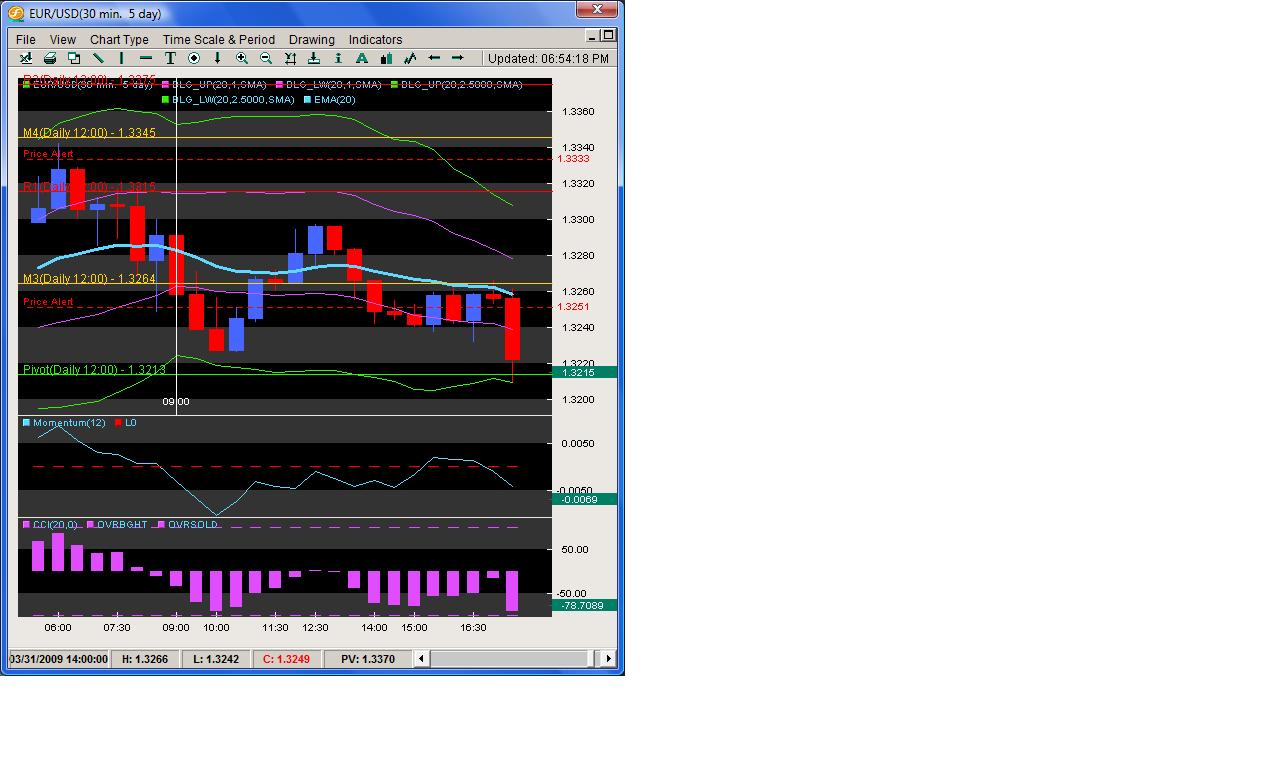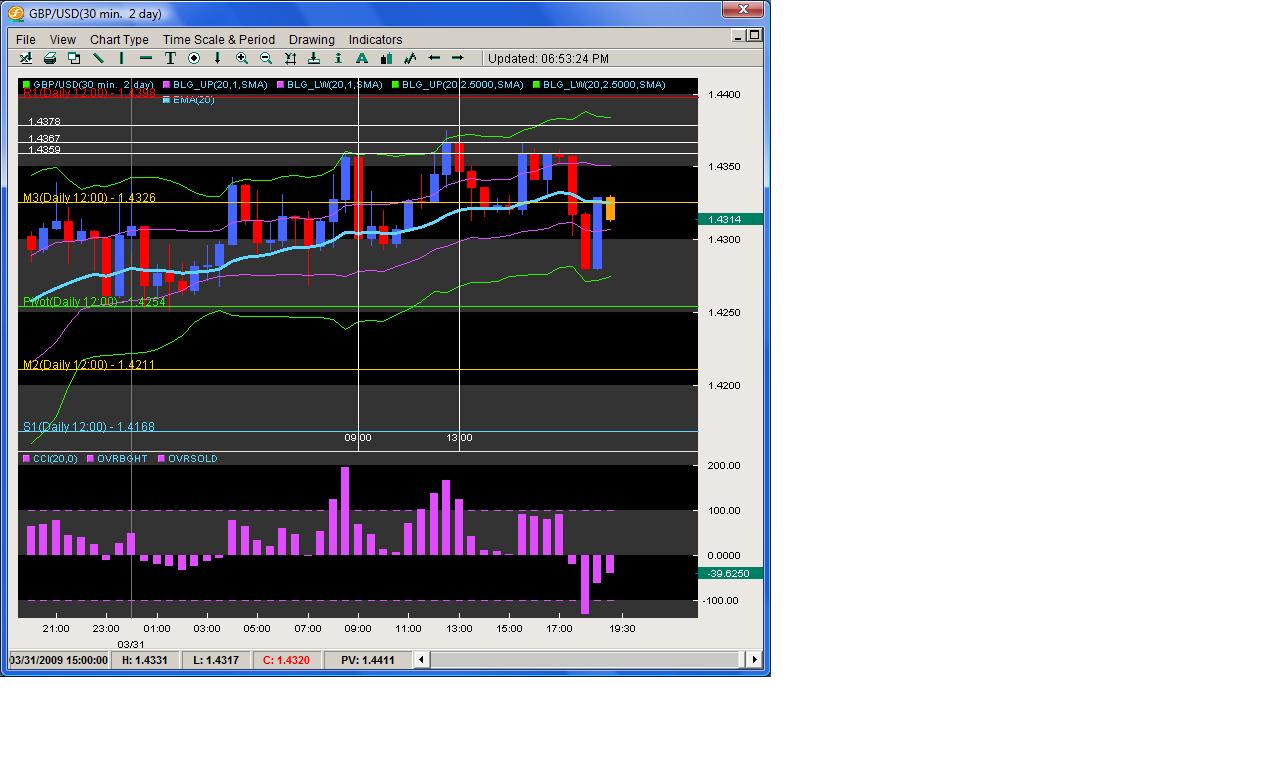Using Reversion to the Mean to Trade Forex
Has anyone noticed how the NY session has been quite banal as of late (particularly FX markets)? It is no wonder considering three of the top five largest U.S. Investment banks went down last year with the lineup being: Lehman Bros., Bear Stears, ^MER^.
Click here to learn how to utilize Bollinger Bands with a quantified, structured approach to increase your trading edges and secure greater gains with Trading with Bollinger Bands® – A Quantified Guide.
Just the fact these three amigos have been wiped off the face of the planet would obviously reduce the amount of trading activity in the NY FX trading session. But, add on to the fact that Citibank’s stock price is down at record lows along with Bank of America and you have an environment that is setup for very little investment banking – particularly putting money into FX trading. With all the banks shoring up capital to stay afloat, this means that once London is closed, the markets are likely to be relatively tame. Thus, instead of the pandemonium and volatility we had in 2H 2008, we now have an environment that is incredibly tame come the rising sun on the eastern shores of the U.S.
This has resulted in trending and momentum moves to be short lived with pairs gaining one day and declining the next. What this means is we have to switch from missiles to guns and trade a much tighter reversion to the mean strategy.
One of my favorite methods for trading Reversion to the Mean involves the use of the Bollinger Bands. Bollinger Bands are based upon statistics, particularly Standard Deviations – usually set to 2.0. The general statistics behind 2STD’s are that 95.4% of all price action should be contained within the 2.0STD BB’s. However, the statistics these were based upon are actually under a ‘normal set of data.’ Since the currency markets are rarely normal, we suggest using 2.5STD’s for your BB settings.
Now if the markets are tame with less institutional order flow – then the BB’s should hold the price action more often. Taking a look at the charts below, we can see for the GBP/USD and EUR/USD, once the London was closed, the bands went horizontal and had no real expansion – meaning there was not enough volatility to push the 95.4+% envelope which often results in a typical Reversion to the Mean maneuver.


Simply using BB’s however will generally not do its so we recommend adding the following indicators; 20EMA – great price target and indicator if price acceleration is present or not 20 CCI – great oscillator to gauge whether the swing move has enough mojo or not 2.5STD Bollinger Bands – designed to contain price action when there is not enough volume/volatility to breakout/trend in one direction.
How to Combine these for Trading?
One method for trading the Reversion to the Mean environments is to put up this consortium of indicators and wait for the BB’s to form a horizontal barrel which they often have been doing from the London close.
Taking a look at the chart below on the 30m GBP/USD, we can see the vertical line designating the London close (12:00 am EST).

Notice how the dominant theme for the BB’s was the horizontal barrel configuration for almost the entire day starting with London (Grey vertical line) and current time. This cues us to look towards CCI and see if its strong in one direction or not. According to this CCI reading, we have most of the bars positive and more than 6 consecutive suggesting the upside is more favored then the downside. But notice after the London close on the first touch of the Upper BB we have a declining CCI suggesting the upside moves are fading. If the horizontal formation of the BB’s hold, then price action should not break them by too much and should revert to the mean, at least towards the 20EMA.
This happens both at the 9am candle and the 13.00 candle with both moves hitting the 20EMA in a short period of time.
What you can do is place entries to short the pair by measuring the width of the BB’s. During both of these trades, the BB’s were approximately 110 pips apart. Take 5% of that number and subtract that from the BB you want to get in on. Since we are shorting at the upper BB, we will be selling right around the 1.4352 or 1.4360level for the first or second touch which is about 5% below the upper BB. Then take 15% of the BB spread (110x.15=16.5pips) and add that above the upper BB to act as your stop. Place two lots and short at your entry level with conservative players targeting the 20EMA and aggressive players having a first target of the 20EMA and a 2nd target just 5% above the lower BB.
In essence, if you simply target the 20EMA (halfway point between the two bands) you are targeting 45% of the range and have exposed only 20% of the range giving you a solid 2.25R:R. If you happen to go for the longer target, then on a 100 pip range, you are risking 20 pips x 2lots = 40 pips and have a potential profit of 45pips (1st lot) and 90pips (2nd lot) for a total of 135pips with 40pips of risk for a 3.375R:R.
Either scenario works from a risk perspective and if you can combine that with CCI readings less than +/-100, or ideally less than +/-50 you drastically increase your chances of the pair reversing and hitting at least your first target.
Considering how paltry the NY markets have been for FX traders lately, we have to adapt to our environment and apply more reversion to the mean methods instead of hoping for the large trends/breakouts that were so common in 2H 2008.
Chris Capre is the Founder of Second Skies LLC which specializes in Trading Systems, Private Mentoring and Advisory services. He has worked for one of the largest retail brokers in the FX market (FXCM) and is now the Fund Manager for White Knight Investments (www.whiteknightfxi.com/index.html). For more information about his services or his company, visit www.2ndskies.com.
